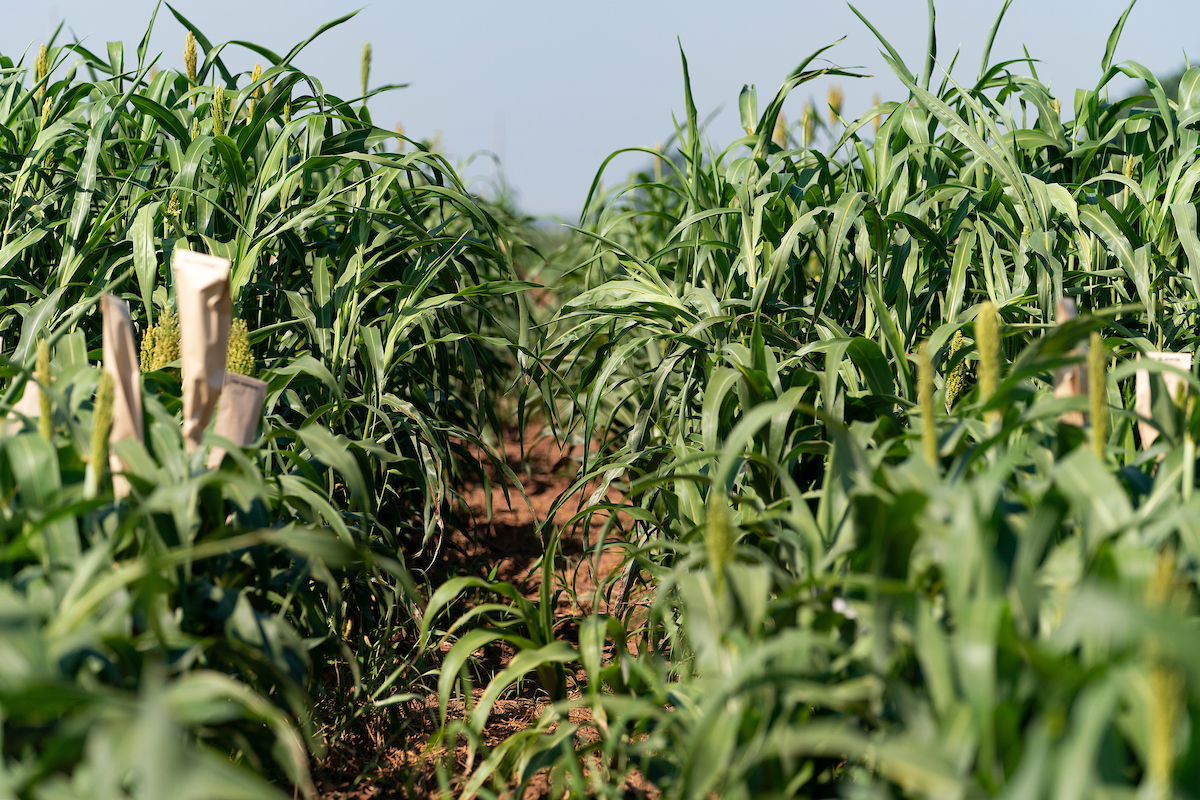Popped sorghum making its way onto snack scene
AgriLife Research breeding to improve quality
Writer: Kay Ledbetter, 806-677-5608, [email protected]
Contact: Dr. Bill Rooney, 979-845-2151, [email protected]
Nicholas Pugh, [email protected]
COLLEGE STATION – Orville Redenbacher might not have envisioned grain sorghum in his air poppers, but the niche snack is finding its way onto U.S. grocery shelves, and a Texas A&M AgriLife Research program is conducting research into the genetic inheritance of popping in grain sorghum.

Dr. Bill Rooney, an AgriLife Research sorghum breeder in College Station, has been studying the human benefits of the phytochemicals in sorghum for many years, and his research into popped sorghum is a result.
Worldwide, sorghum is a human food, but in the U.S., it is used primarily as livestock feed.
Rooney said while popped sorghum has been consumed in certain cultures for generations, it has not had the amount of selective breeding that popcorn has. His team is now seeking heritable traits in sorghum lines associated with popping quality.
Nicholas Pugh, a graduate student under Rooney, evaluated 130 lines of sorghum derived from a hybrid of two known varieties with popping characteristics. Grain from each line was produced in Weslaco, Corpus Christi and Halfway just north of Lubbock. From these samples, 500 seeds were counted and popped.
“We want to determine what the relative influence of genotype, environment, and genotype by environment effects were on popping quality,” he said. “We wanted to determine how heritable popping quality is in sorghum. Finally, we wanted to identify quantitative trait locations.”

He said their initial results found the two popping quality traits of interest to this study, popping efficiency – what proportion of kernels pop, and expansion ratio – how much a kernel expands when it pops, are both heritable within the population used for the study.
“This means both traits can likely be improved, and it would be feasible to do so through selective breeding,” Pugh said.
The resulting popped sorghum kernels are much smaller than popped popcorn kernels, he said. This is because of the smaller size of the grain before popping as well as the much higher expansion ratio seen in commercial popcorn varieties. Typically, about half the sorghum kernels popped, and averaged about eight times the size of the un-popped kernel.
“We also found the most important factor in improvement is to produce the pop sorghum in a suitable environment. We identified the environment at Halfway pops consistently better than the other two sites used in the study,” he said.
Rooney said quantitative trait loci or sections of the DNA on sorghum plants for popping quality traits have been found, though they were not found across all environments and were instead unique to each location.
“This shows that environment, or genotype and environment interactions, play an important role in determining a variety’s popping quality,” he said.
This study can be used to make decisions to improve the efficiency of breeding new varieties of sorghum with improved popping characteristics, Rooney said.





